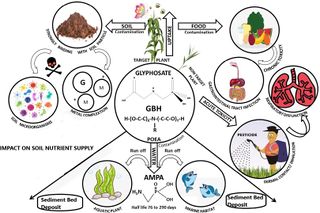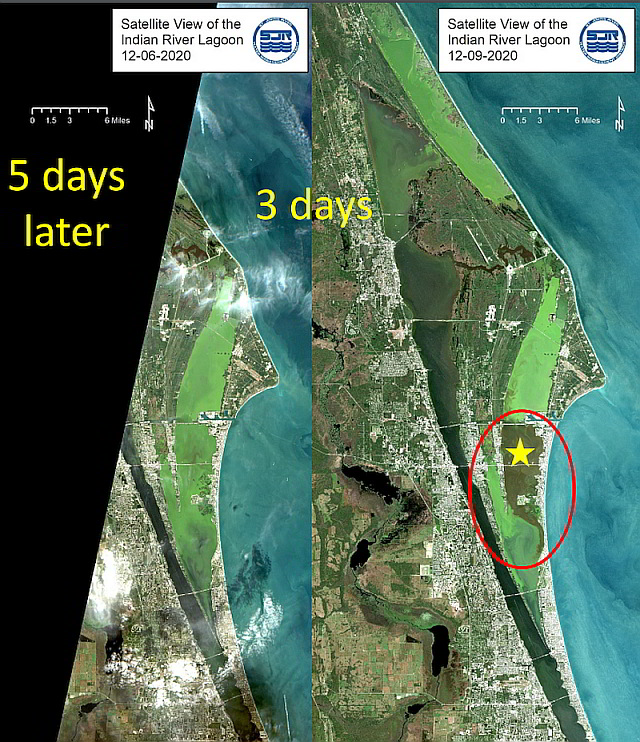IRLNews:Bloom Free But Barren: Difference between revisions
No edit summary |
mNo edit summary |
||
| (22 intermediate revisions by the same user not shown) | |||
| Line 1: | Line 1: | ||
{{News Link | {{News Link | ||
|Title=Bloom Free But Barren | |Title=Bloom Free But Barren | ||
|Url=https://indianriverlagoonnews.org/guide/index.php | |Url=https://indianriverlagoonnews.org/guide/index.php?title=IRLNews:Bloom_Free_But_Barren | ||
|Access_Date=2021-12- | |Access_Date=2021-12-16 | ||
|Description=Without immediate drastic environmental changes from the city to federal level Brevard County residents may soon witness the death of the Northern Indian and Banana River lagoons. | |Description=Without immediate drastic environmental changes from the city to federal level Brevard County residents may soon witness the death of the Northern Indian and Banana River lagoons. | ||
|Image=News bloom free but barren.jpg | |Image=News bloom free but barren.jpg | ||
| Line 17: | Line 17: | ||
|Published_Date=2021-12-16 | |Published_Date=2021-12-16 | ||
|Publisher=Indian River Lagoon Project | |Publisher=Indian River Lagoon Project | ||
|Publisher_Url=https://indianriverlagoonnews.org/guide | |Publisher_Url=https://indianriverlagoonnews.org/guide/index.php/Main_Page | ||
|Text_Body=I am thankful that it has been one year since SJRWMD Scientist Dr. Chuck Jacoby has used the term "new unknown nanocyanobacterium" | |SubTitle=Brevard's lagoons have not had an algae superbloom this year. | ||
|Text_Body=I am thankful that it has been one year since SJRWMD Scientist Dr. Chuck Jacoby has used the term "new unknown nanocyanobacterium" to describe Brevard's North Indian River Lagoon (NIRL).<ref>[https://indianriverlagoonnews.org/guide/index.php/IRLNews:2020/12/19/December_2020_Indian_River_Lagoon_Water_Quality_Update_by_Chuck_Jacoby Indian River Lagoon Water Quality Update by Chuck Jacoby December 2020], retrieved 2021-12-16.</ref> | |||
In spite of Titusville’s 7 million gallon effluent spill, the NIRL has not had a major algae bloom this year. The estuary is bloom free, the water is clear but the bottom is barren of seagrass. I wonder what besides algae blooms could be inhibiting our seagrass growth? | |||
Glyphosate herbicide can have a 240 day half-life<ref>[https://www.sciencedirect.com/science/article/pii/S2667010021001281 Exposure risk and environmental impacts of glyphosate: Highlights on the toxicity of herbicide co-formulants], published 2021-08, retrieved 2021-12-16.</ref> and the Northern Indian River lagoons have a residence (flush) time of over 220 days<ref> | |||
[https://www.portcanaveral.com/getattachment/About/Environmental-Stewardship/IRL-Flushing-Model-Experiments-Report-10_15_18-(1).pdf.aspx IRL Flushing Model Experiments (PDF 36pp)], September 2018, Dr. Gary Zarillo, Florida Tech. retrieved on 2021-12-16.</ref>. What goes in the water stays in the water. | |||
[[File:Glyphosate_Infographic.jpg|thumb|320px|alt=Glyphosate Infographic|Glyphosate Infographic]] | |||
The International Agency for Research on Cancer (IARC) has determined that glyphosate is a probable health hazard to humans.<ref name="IARC">[https://www.iarc.who.int/wp-content/uploads/2018/07/MonographVolume112-1.pdf IARC Monographs Volume 112: evaluation of five organophosphate insecticides and herbicides], retrieved 2021-12-16.</ref> | |||
The | A 2020 analysis determined that prolonged exposure to glyphosate may cause organ damage and cancerous tumors in experimental animals.<ref name="Portier2020">[https://ehjournal.biomedcentral.com/articles/10.1186/s12940-020-00574-1 A comprehensive analysis of the animal carcinogenicity data for glyphosate from chronic exposure rodent carcinogenicity studies (PDF 18pp 697KB)], published 2020, retrieved 2021-12-16.</ref> | ||
A 2021 UF Aquatic Animal Health study found that 55.8% of the Florida manatees tested have glyphosate in their bloodstream. The herbicide affects the manatees digestive systems, major organs and neurological systems.<ref name="UFVetMed">[https://www.sciencedirect.com/science/article/pii/S0160412021001185 Aquatic Animal Health Chronic exposure to glyphosate in Florida manatee], retrieved 2021-12-16.</ref> | |||
Which of our research groups will be the first to monitor Indian River Lagoon glyphosate levels? | |||
Martin and Indian River counties have banned the use of glyphosate herbicide in order to protect human health and the Indian River Lagoon ecosystem. When will Brevard County follow suit? | |||
The cities of Cape Canaveral and Satellite Beach have banned the municipal use of glyphosate herbicide. When will Titusville, Melbourne, and Palm Bay follow their lead? | |||
When will Florida's Melbourne-Tillman Water Control and St. Johns Water Management districts trade herbicides for harvesting in their nutrient loaded drainage canals? | When will Florida's Melbourne-Tillman Water Control and St. Johns Water Management districts trade herbicides for harvesting in their nutrient loaded drainage canals? | ||
Kennedy Space Center environmental biologists report a 95% loss of seagrass in the north Banana River. When will the | Kennedy Space Center environmental biologists report a 95% loss of seagrass in the north Banana River. When will the Indian River Lagoon National Estuary’s largest stakeholder, the U.S Federal Government, adopt alternatives to glyphosate on its 140,000 acre property? | ||
Glyphosate is a probable health hazard to | Glyphosate remains in the water column for 240 days; is a probable health hazard to humans and wildlife; and may be partially responsible for the demise of the estuary’s '''keystone indicator species''', seagrass. | ||
In other words, the canary in the coal mine has died. Without immediate drastic environmental changes from the city to federal level Brevard County residents may soon witness the death of the Northern Indian and Banana River lagoons. | In other words, the canary in the coal mine has died. Without immediate drastic environmental changes from the city to federal level Brevard County residents may soon witness the death of the Northern Indian and Banana River lagoons. | ||
==Video== | |||
<div class="irlvideo noprint"> | |||
{{#evl:RmniQoVnJdQ|Indian River Update - Chuck Jacoby - 16 DEC 2020|1|player=youtube}} | |||
{{#evl:piK1MtmhUh4|IARC explains the carcinogenicity of Glyphosate|2|player=youtube}} | |||
{{#evl:VAWGp7U2r7A|Florida Manatees are being poisoned with glyphosate|3|player=youtube}} | |||
<evlplayer w="340" h="220" id="youtube"><div style="width:340px;">https://img.youtube.com/vi/RmniQoVnJdQ/0.jpg</div></evlplayer> | |||
</div> | |||
<div class="irlcontentbottom noprint"> | |||
==Documents== | |||
*[https://repository.lib.fit.edu/bitstream/handle/11141/3402/BELSON-THESIS-2021.pdf The Potential of Indian River Lagoon Muck to act as a Reservoir for Emerging Organic Contaminants (PDF 94pp 1.8MB)] | |||
==References== | |||
<references /> | |||
</div> | |||
|Topic=Water Quality | |Topic=Water Quality | ||
|Page=Nutrient Pollution | |Page=Nutrient Pollution | ||
|Keywords= | |Keywords=Glyphosate Indian Banana River Lagoon Seagrass Loss | ||
|Poster=Admin | |Poster=Admin | ||
|Posted=20211216120001 | |Posted=20211216120001 | ||
}} | }} | ||
Latest revision as of 05:43, January 4, 2022
In spite of Titusville’s 7 million gallon effluent spill, the NIRL has not had a major algae bloom this year. The estuary is bloom free, the water is clear but the bottom is barren of seagrass. I wonder what besides algae blooms could be inhibiting our seagrass growth?
Glyphosate herbicide can have a 240 day half-life[2] and the Northern Indian River lagoons have a residence (flush) time of over 220 days[3]. What goes in the water stays in the water.

The International Agency for Research on Cancer (IARC) has determined that glyphosate is a probable health hazard to humans.[4]
A 2020 analysis determined that prolonged exposure to glyphosate may cause organ damage and cancerous tumors in experimental animals.[5]
A 2021 UF Aquatic Animal Health study found that 55.8% of the Florida manatees tested have glyphosate in their bloodstream. The herbicide affects the manatees digestive systems, major organs and neurological systems.[6]
Which of our research groups will be the first to monitor Indian River Lagoon glyphosate levels?
Martin and Indian River counties have banned the use of glyphosate herbicide in order to protect human health and the Indian River Lagoon ecosystem. When will Brevard County follow suit?
The cities of Cape Canaveral and Satellite Beach have banned the municipal use of glyphosate herbicide. When will Titusville, Melbourne, and Palm Bay follow their lead?
When will Florida's Melbourne-Tillman Water Control and St. Johns Water Management districts trade herbicides for harvesting in their nutrient loaded drainage canals?
Kennedy Space Center environmental biologists report a 95% loss of seagrass in the north Banana River. When will the Indian River Lagoon National Estuary’s largest stakeholder, the U.S Federal Government, adopt alternatives to glyphosate on its 140,000 acre property?
Glyphosate remains in the water column for 240 days; is a probable health hazard to humans and wildlife; and may be partially responsible for the demise of the estuary’s keystone indicator species, seagrass.
In other words, the canary in the coal mine has died. Without immediate drastic environmental changes from the city to federal level Brevard County residents may soon witness the death of the Northern Indian and Banana River lagoons.
Video


